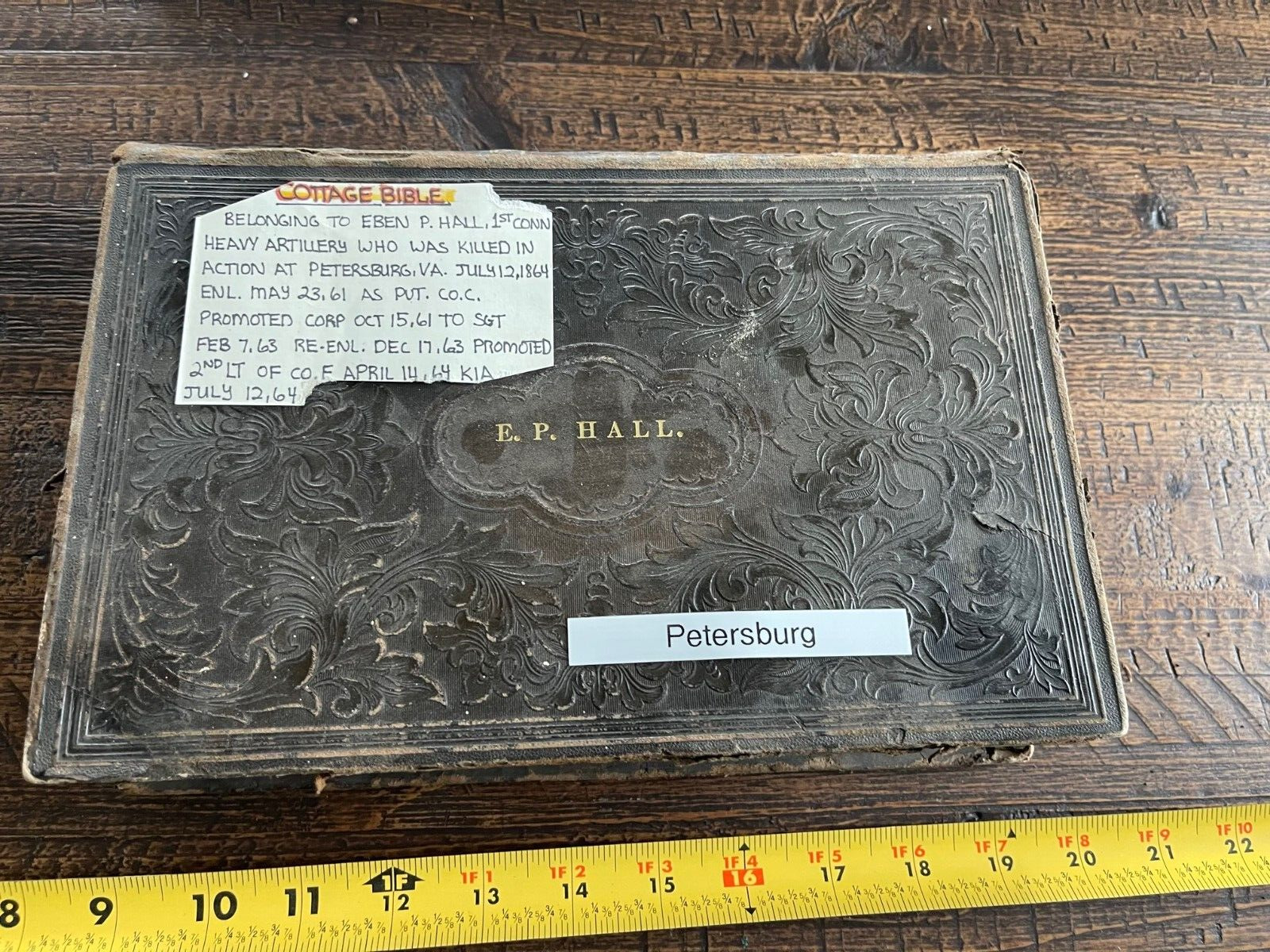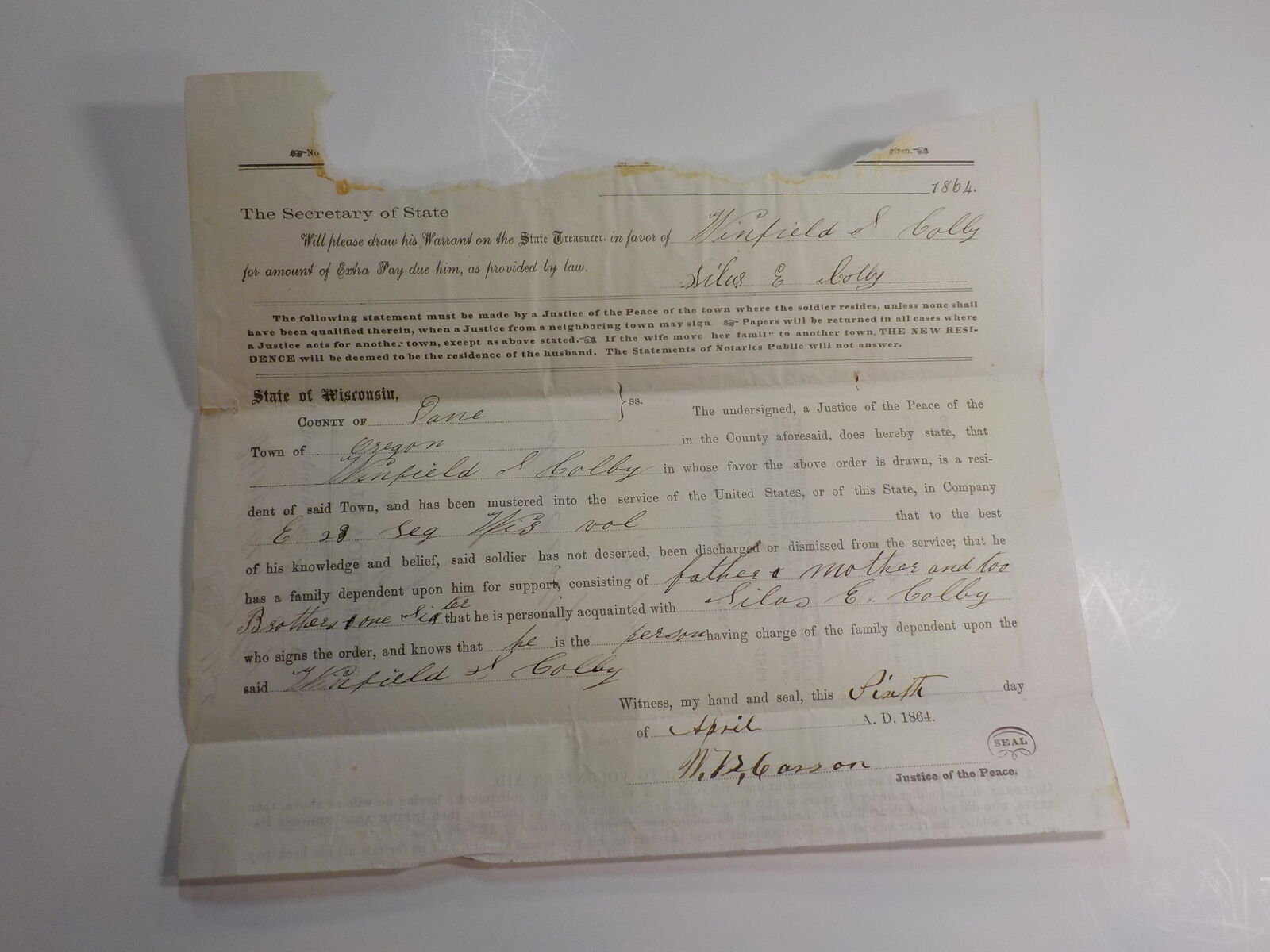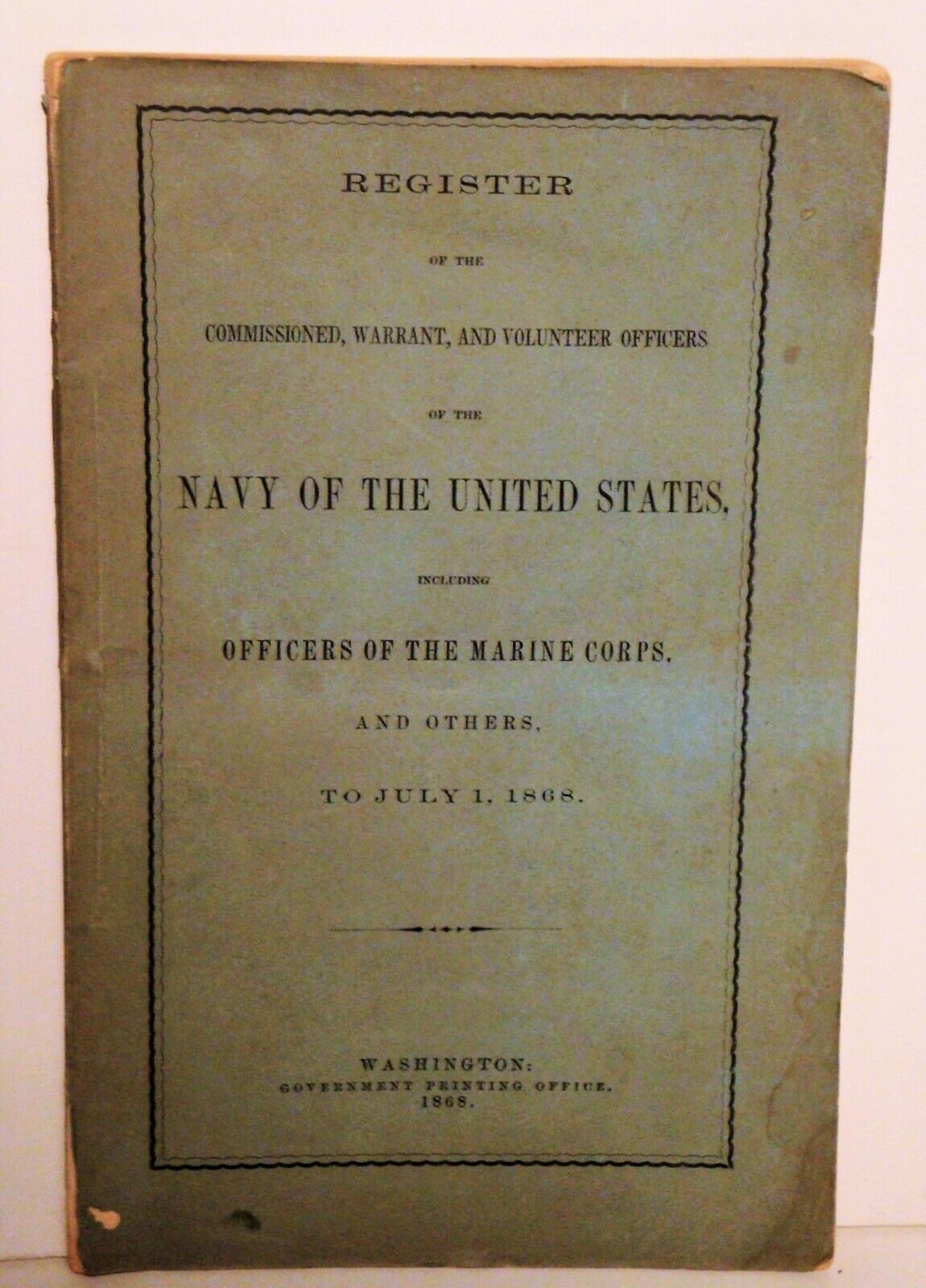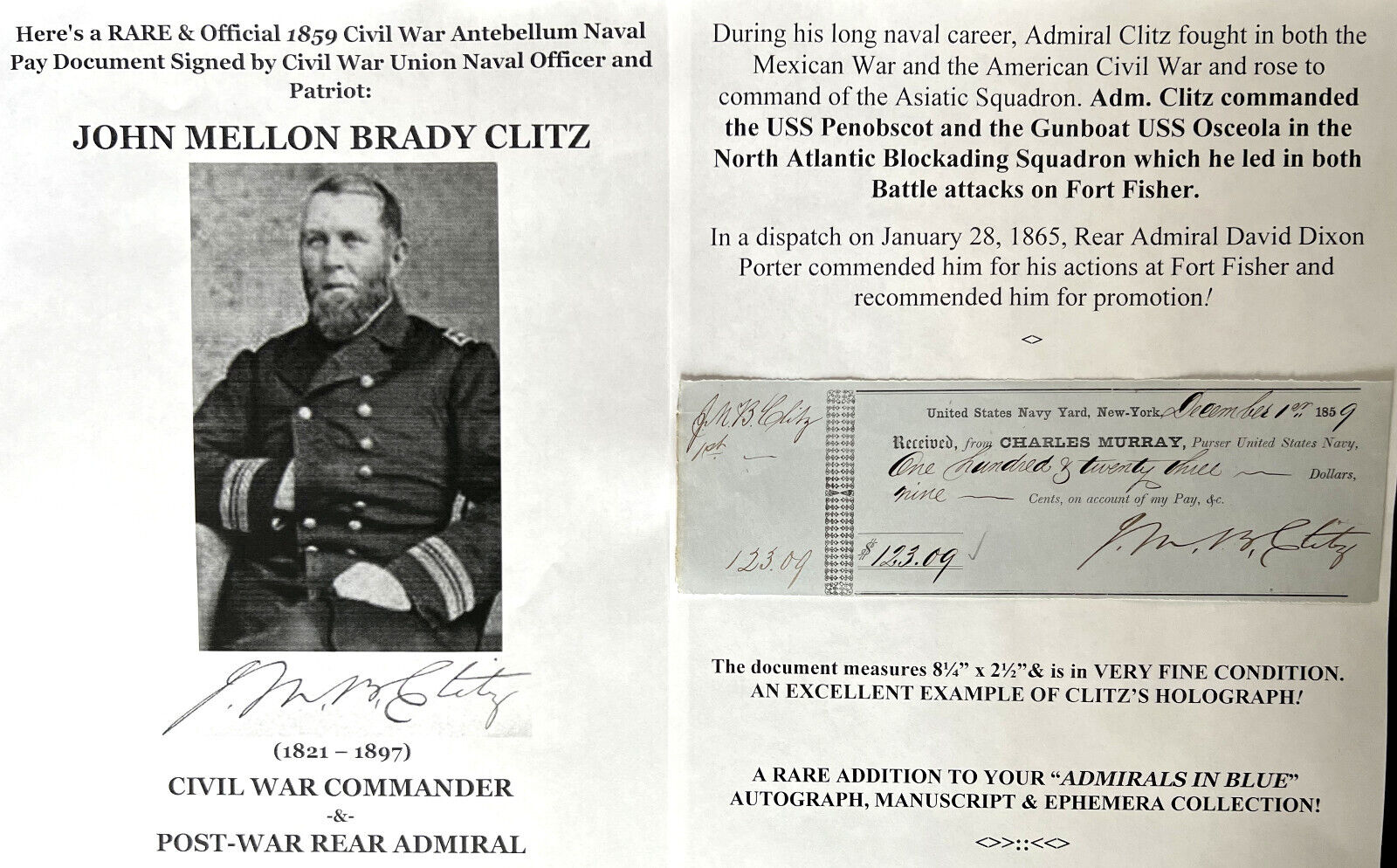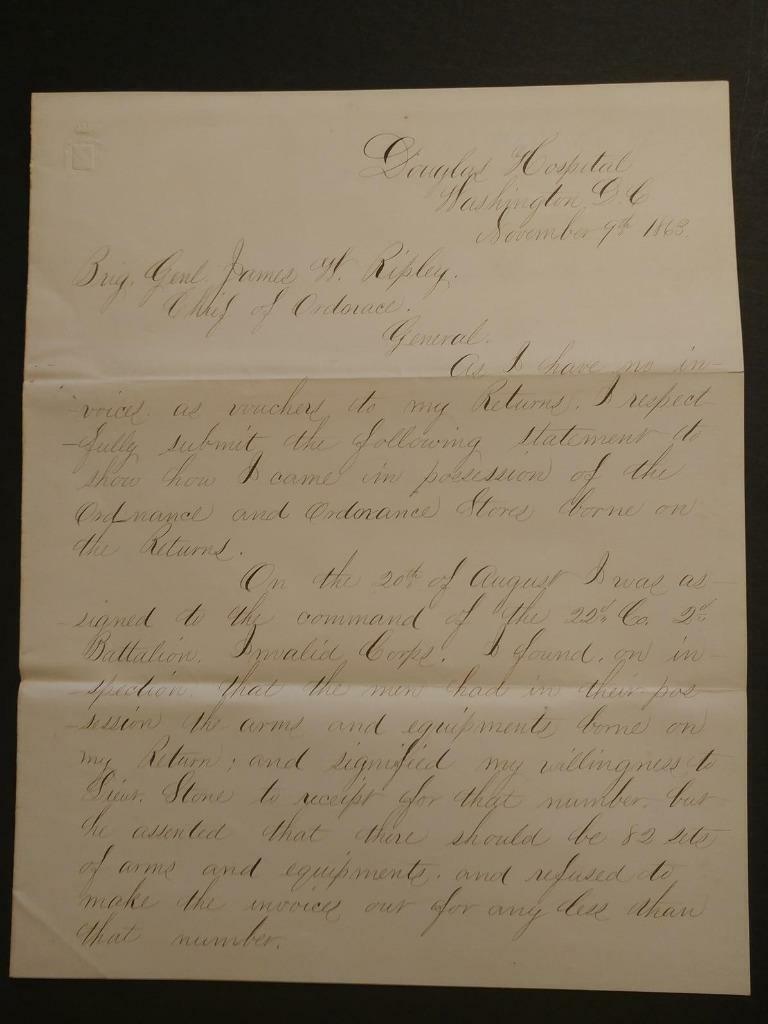-40%
CIVIL WAR GETTYSBURG CAPTAIN 5th 7th NEW JERSEY INFANTRY DOCUMENT SIGNED VA 1865
$ 8.18
- Description
- Size Guide
Description
DAVID H. AYERS(ca.1830 - 1882)
CIVIL WAR BATTLE OF GETTYSBURG UNION CAPTAIN IN THE “
HARD-FIGHTING
” 5
th
and 7
th
NEW JERSEY INFANTRY, ARMY OF THE POTOMAC
David H. Ayers
enlisted in the Union Army on Sept. 4, 1862 as a 2nd Lieutenant, and commissioned into "I" Co. NJ 27th Infantry He was Mustered Out on July 2, 1863 at Newark, NJ.
On April 13, 1864 he was commissioned into "I" Co. NJ 5th Infantry. On Nov. 6, 1864, he transferred into "E" Co. NJ 7th Infantry. He was Mustered Out on July 17, 1865 at Washington, DC.
During the Civil War, he received the following promotions:
1st Lieut April 20, 1863; Captain April 13, 1864 (As of Co. I 5th NJ Infantry); Intra Regimental Company Transfers from “I” Company to “A” Company.
<
<>
>
HERE IS A CIVIL WAR DATE DOCUMENT SIGNED BY AYRES – A
8-PAGE MONTHLY RETURN OF CLOTHING, CAMP and GARRISON EQUIPAGE RECEIVED AND ISSUED AT “CAMP NEAR PETERSBURG, VIRGINIA BY CAPTAIN DAVID H. AYRES, COMP E, 7
TH
REGT. N.J.VOLS. COMMANDING,
DATED MARCH 11,
1865, and
BEAUTIFULLY EXECUTED and BOLDLY SIGNED BY AYRES!
The document measures 8” x 10” and is in very fine condition
.
A FINE ADDITION TO YOUR CIVIL WAR NEW JERSEY “
OFFICERS IN BLUE
” MILITARY HISTORY AUTOGRAPH, MANUSCRIPT & EPHEMERA COLLECTION!
<
<>
>
BIOGRAPHY OF DAVID H. AYERS
Civil War Union Army Officer. He was commissioned as a 2nd Lieutenant in Company I, 27th New Jersey Volunteer Infantry, and was mustered in on September 4, 1862. After serving through the December 1862 Fredericksburg Campaign, and his regiment's Sprung 1863 occupation duty in Kentucky, he was promoted to 1st Lieutenant in April 20, 1863, filling the vacancy caused by the resignation of Lieutenant Peter Churchfield. He served until the expiration of his enlistment on July 2, 1863. Nearly a year later he was commissioned Captain of Company I, 5th New Jersey Volunteer Infantry, replacing Captain Thomas Kelly, who was killed at the Battle of Gettysburg the year before. He was later moved to command the 5th’s Company A. When the original enlistments for the 5th New Jersey expired in September 1864, he was transferred to the 7th New Jersey Volunteer Infantry’s Company E, replacing Captain Daniel Hart, who was transferred himself. Served until his muster out of Federal service on July 17, 1865.
Capt David H. Ayers
Birth
unknown
Death
22 Aug 1882
Burial
Fairmount Cemetery
,
Newark, Essex County, New Jersey, USA
Plot
Section K, Lot 104
NEW JERSEY
SEVENTH INFANTRY
(Three Years)
Seventh Infantry.--Cols., Joseph W. Revere, Louis R.
Francine, Francis Price, Jr.; Lieut.-Cols., Ezra A. Carman,
Daniel Hart; Majs., J. Dallas McIntosh, Frederick Cooper,
Charles H. Fosselman.
This regiment was organized under the
provisions of an act of Congress, approved July 22, 1861, and
was fully organized, officered and equipped by Sept. 3, when,
although the strength of the regiment was below the maximum as
required, it was mustered into the U. S. service at Camp Olden,
Trenton, for three years.
At the urgent request of the
government that the regiment be forwarded to the seat of war,
seven companies were despatched to Washington on Sept. 19, and
reported for duty the following day.
The remaining three
companies were recruited up to the number required and left the
state on Oct. 3, joining the regiment at Washington.
The
strength of the regiment then was 38 officers, 882 non-
commissioned officers and privates, a total of 920.
Upon
arrival at Washington the regiment went into camp at Meridian
hill, and remained there until the early part of Dec., 1861,
when it was ordered to report to Gen. Joseph Hooker, near
Budd's ferry, Md., where it was brigaded with the 5th, 6th and
8th N. J. and designated the 3d brigade of Hooker's division.
The regiment was one of the four that composed what was
generally known as the 2d New Jersey brigade.
At the battle of
Williamsburg, Va., the 6th, 7th and 8th regiments were sent
into the left of the road, occupying a wood in front of the
enemy's works.
Lieut.-Col. Carman was wounded in this action.
Gen. Hooker, in his report of the battle of Fair Oaks spoke in
most emphatic terms of the gallantry of the brigade and added
that the service assigned to the 7th and 8th N. J. was
performed to his entire satisfaction.
In the engagement at
Seven Pines, the loss of the regiment was 1 killed, 5 wounded
and 1 missing.
In the engagement at Bristoe Station Capt.
Abbott was killed and a considerable number wounded.
In the
series of engagements ending on Sept. 1, 1862, the total loss
of the regiment was 36.
While lying at Fairfax Station, on the
morning of Nov. 22, Gen. Patterson, commanding the brigade,
died suddenly in his tent and Col. Revere of the 7th succeeded
to the command.
In the Chancellorsville campaign in the spring
of 1863, the New Jersey brigade, under command of Gen. Mott,
crossed the Rappahannock on Friday, May 1, and in the action
which followed the 7th lost 6 killed, 43 wounded and 4 missing.
At Gettysburg, on July 2, in the face of a murderous fire, the
New Jersey troops held their position for a time, but were
ultimately compelled to fall back, Col. Francine and Lieut.-
Col. Price, with many other officers, sustaining serious
injuries.
The total losses of the regiment during the months
of May and June, 1864, amounted to 13 killed, 86 wounded and 59
missing.
Among the wounded in the charge at Fort Morton, in
front of Petersburg, were 2 privates of the 7th.
At Hatcher's
run Gen. McAllister directed the 7th, which was the third
regiment from the left of his line, formed at a different angle
so as to enable it to enfilade the enemy's columns, to oblique
its fire, which aided materially in driving the enemy from his
position.
At the Armstrong house, the 7th and 8th N. J.
regiments were ordered to the right of the division, where
later in the day, when Lieut.-Col. Schoonover's command was
attacked and driven from the works occupied in the morning, the
two regiments went to his help, with the result that his line
was reestablished and securely held.
On June 25, 1863, a large
number of the regiment reenlisted in the field for three years
or during the war.
Those who did not reenlist and whose term
of service had expired reported by order at Trenton, N. J., and
were mustered out on Oct. 7, 1864.
Those who remained were
consolidated into the 7th battalion and so remained until Nov.
6, 1864, at which time the 5th battalion was joined to it by
transfer.
The command then resumed its regimental
organization, which it continued until the close of the war,
being finally mustered out near Washington, D. C., July 17,
1865.
The total strength of the regiment was 2,906, and it
lost, by resignation 30, by discharge 374, by promotion 73, by
transfer 415, by death 260, by desertion 656, by dismissal 7,
not accounted for 70, mustered out 1,021.
Source:
The Union Army, vol. 3
<<>
::
<>>
NEW JERSEY
FIFTH INFANTRY
(Three Years)
Fifth Infantry.--Cols., Samuel H. Starr, William J.
Sewell; Lieut.-Cols., Gershom Mott, John Ramsey; Majs., William
S. Truex, Ashbel W. Angel.
This regiment was organized under
the provisions of an act of Congress, approved July 22, 1861,
and was fully organized, equipped and officered by Aug. 22, at
which time it was mustered into the U. S. service at Camp
Olden, Trenton, for three years.
It left the state on Aug. 29,
with a full complement of men--officers, 38; non-commissioned
officers and privates, 823; total, 861.
Upon arrival at
Washington it went into camp at Meridian hill and remained
there until the early part of Dec., 1861, at which time it was
ordered to report to Gen. Joseph Hooker, near Budd's ferry,
Md., where it was brigaded with the 6th, 7th and 8th N. J. in
what was known as the 3d brigade of Hooker's division.
But the
four regiments named were generally known as the 2nd New Jersey
brigade.
When Beauregard withdrew from Manassas, Gen. Hooker,
acting with his usual promptitude, determined at once to occupy
the abandoned position, and in obedience to his orders, Lieut.-
Col. Mott, on March 10, 1862, crossed the Potomac with a detail
of 500 men of the 5th regiment and seized the deserted works,
capturing 4 guns, together with a large quantity of shells,
grape and canister, round shot, and other materials of war.
The regiment participated in the siege of Yorktown; then moved
to Williamsburg, where Hooker opened the fight, advancing his
skirmishers on both sides of the road by which he had come up,
at the same time throwing forward two batteries on the right,
and sending in the 5th as their support, in which position the
regiment bravely maintained its reputation.
At the battle of
Fair Oaks the 5th and 6th moved forward under Col. Starr,
cutting their way through a mass of panic-stricken fugitives.
In this conflict, the loss of the 5th was 4 men killed, 51
wounded and 2 missing.
After the action the two regiments went
into camp for the night in their old position, but on the
morrow advanced and occupied the ground recovered from the
enemy, where they remained until June 25, being almost
constantly on duty at the front.
In the engagement known as
the "affair" at Seven Pines, on June 25, the losses of the
regiment were 2 killed, 13 wounded and 2 missing.
In the
series of engagements that followed, until September, 1862, the
brigade suffered severely, losing at Bristoe Station 44 men in
killed, wounded and missing; at Bull Run, 199 men; and at
Chantilly, 5; a total of 248, of which the 5th lost 51.
Going
into camp at Alexandria, the brigade remained undisturbed until
Nov. 1, when Lee having been driven from Maryland, it proceeded
towards Bristoe Station, where it arrived on the 4th.
For the
Chancellorsville campaign in the spring of 1863, the brigade
crossed the Rappahannock on Friday, May 1, under command of
Gen. Mott.
Two regiments, the 5th and 8th N. J., were detached
to guard the pontoons, while the others were picketed along the
Rappahannock to its junction with the Rapidan, and thence along
that river to connect with pickets thrown out by Carr's 1st N.
Y. brigade.
Soon after this disposition had been made orders
were received to withdraw the pickets and advance the whole
division to the front; but while waiting for the 5th and 8th
regiments to join the brigade, Gen. Mott received further
instructions directing him to guard the ford, Seeley's battery
being placed at his disposal to aid in that duty.
During the
contest which followed, Gen. Mott was wounded and Col. Sewell,
of the 5th, assumed command.
The losses of the brigade during
the day amounted to 378 men, and of the 5th regiment, 12
killed, 104 wounded and 9 missing.
Among the killed were
Lieuts. Sawyer and Moore.
At the battle of Gettysburg Seeley's
battery was brought up and placed in position, supported at
first by another and later by the 5th regiment, lying on the
side of a road directly in front.
In the face of a tempest of
battle-hail the regiment held its position for a time, but
other regiments giving way, it was also ultimately compelled to
fall back with the battery, Col. Sewell and acting Maj. Healey
being badly wounded.
At the battle of the Wilderness, on May
5, 1864, the 2nd brigade had been advanced to an elevated
position on the Brock road, where breastworks were hastily
thrown up.
Two regiments--the 5th and the 8th N. J.--under
command of Col. Sewell, moved up the road to its junction with
what was known as the Furnace road, where Sewell was placed in
command of the skirmish line.
At 5 o'clock on the morning of
the 6th, the line again advanced, three regiments, the 5th, 6th
and 11th N. J., being placed under Col. Sewell.
The total
losses of the regiment during the months of May and June, 1864,
amounted to 16 killed, 119 wounded and 22 missing.
During the
months of Aug. and Sept., 1864, a large number of substitutes
were forwarded to the regiment and with those who had
reenlisted and those whose term of service had not expired,
composed what was known as the 5th battalion, retaining their
organization until Nov. 6, 1864, when they were consolidated
with the 7th regiment.
The regiment proper, consisting of 200
men, was mustered out Sept. 7, 1864.
Source:
The Union Army, vol. 3
I am a proud member of the Universal Autograph Collectors Club (UACC), The Ephemera Society of America, the Manuscript Society and the American Political Items Collectors (APIC) (member name: John Lissandrello). I subscribe to each organizations' code of ethics and authenticity is guaranteed. ~Providing quality service and historical memorabilia online for over twenty years.~
WE ONLY SELL GENUINE ITEMS, i.e., NO REPRODUCTIONS, FAKES OR COPIES!




